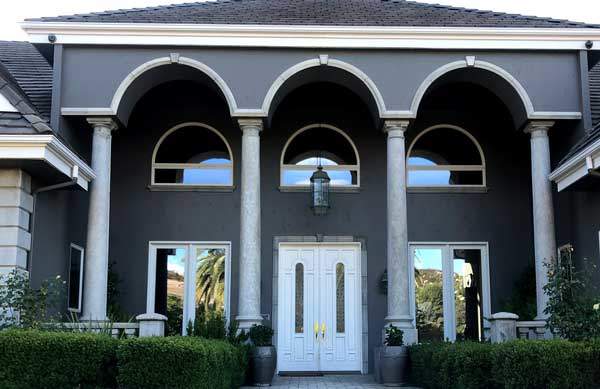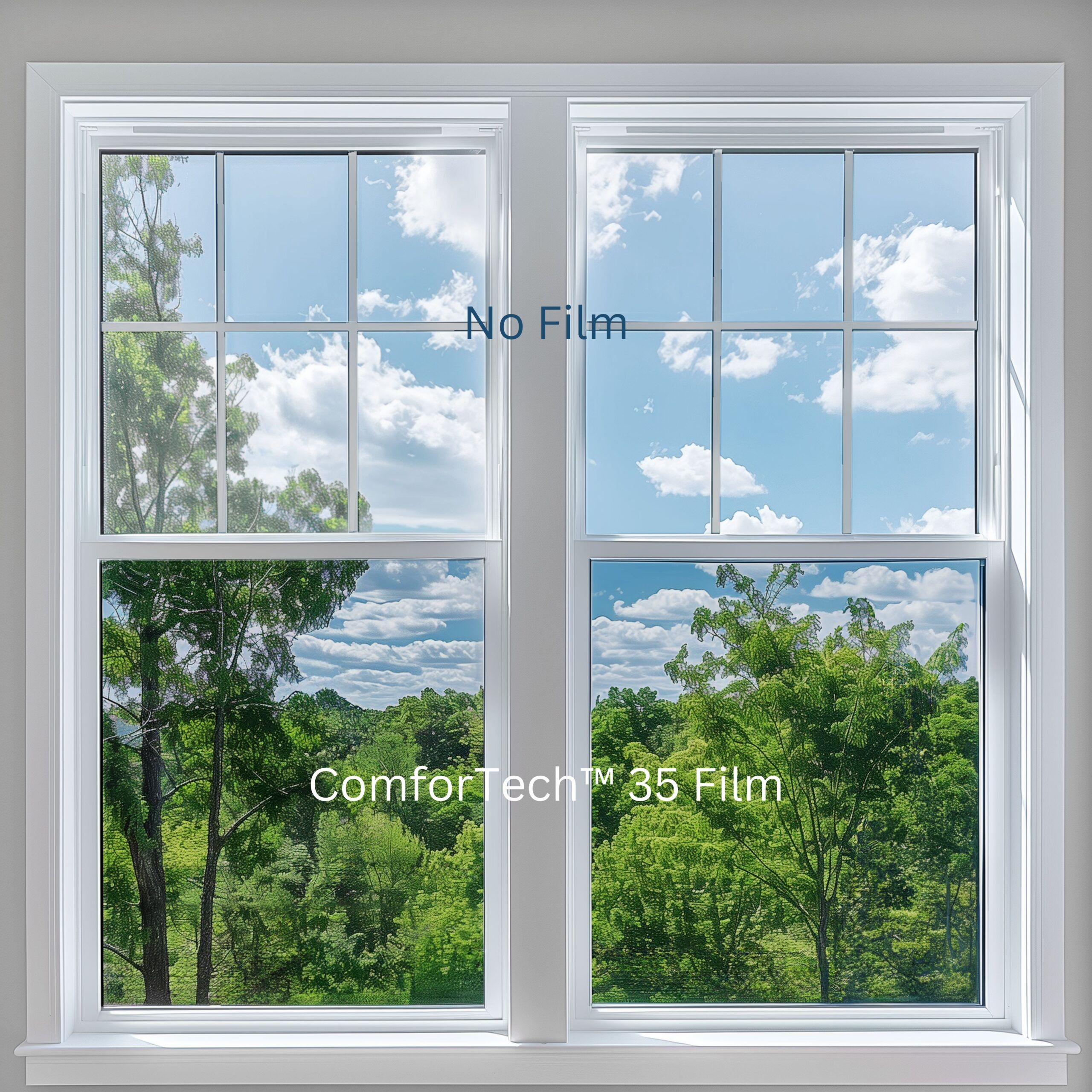Just How Residential Home Window Tinting Boosts Your Home's Power Efficiency
Residential home window tinting provides an engaging solution for house owners looking for to boost power effectiveness within their home. By applying specialized films to windows, it properly lowers warm transfer, consequently stabilizing interior temperature levels and decreasing the demand for extreme heating or cooling. This not only reduces power consumption but also gives a much more comfortable environment by reducing glow. Comprehending the nuances of just how tinting jobs and choosing the ideal type for your home can be crucial. Strangely enough, what factors should one think about prior to making this investment?
Understanding Window Tinting
Understanding window tinting is crucial for home owners seeking to improve both comfort and power efficiency in their space. Residential Window Tint. Window tinting entails the application of a slim film to the interior or exterior surface of glass home windows. This film can substantially modulate the quantity of sunlight and warm that goes into a home, therefore influencing indoor climate problems
There are various kinds of home window tinting films offered, each with distinctive residential or commercial properties. The efficiency of window tinting is commonly measured by its Visible Light Transmission (VLT) percentage, which shows exactly how much light can pass with the film.
Benefits of Energy Efficiency
Window tinting not just improves aesthetic appeals yet additionally plays a significant duty in enhancing energy performance within property rooms. By reducing heat transfer with windows, colored films develop a more secure indoor climate, which can lead to considerable decreases in power usage for heating and cooling. This power performance converts into lower utility costs, providing homeowners with substantial long-lasting savings.

In addition, home window tinting enhances the convenience of living rooms. By decreasing glow and blocking hazardous UV rays, tinted windows create an even more pleasurable setting, which can result in improved well-being for passengers. The security versus UV rays also aids preserve furniture and flooring from fading, adding to the durability of household things.
Exactly How Tinting Functions
Tinting movies operate through a combination of innovative materials and modern technologies made to manage the quantity of solar power entering a home. Mostly composed of polyester, these films usually incorporate metallic or ceramic particles that show and absorb warm. This double ability permits them to considerably decrease the infiltration of ultraviolet (UV) rays and infrared radiation while allowing visible light to go through.
The effectiveness of home window tinting is gauged by its solar warmth gain coefficient (SHGC), which indicates just how much solar energy is transferred via the window. Reduced SHGC worths are preferable as they represent better warmth being rejected. Additionally, home window colors can include a variety of shades, permitting homeowners to customize their visual choices while boosting energy performance.
Furthermore, these movies act as an obstacle, stopping warm loss during cooler months by mirroring indoor heat back see this page into the living space. This thermal insulation result complements the cooling benefits obtained during warmer months, adding to a balanced indoor climate year-round. By managing solar power properly, domestic window tinting not only enhances comfort however also plays a vital function in lowering power usage and reducing energy costs.
Choosing the Right Color

There are different kinds of home window films available, including colored, metalized, and ceramic. Colored movies are affordable yet might have limited longevity. Metalized movies see this site offer better warmth rejection yet can hinder digital signals. Ceramic movies give outstanding heat control without compromising presence and are highly resilient, making them a preferred option.
Noticeable light transmission (VLT) is another vital element, as it suggests the amount of all-natural light that can go through the tinted glass. Property owners should choose a color with a VLT that matches their illumination choices while still offering ample glow decrease.
Additionally, analyzing the solar heat gain coefficient (SHGC) can aid figure out just how well a color can obstruct warm from sunlight. A reduced SHGC suggests far better warm control, ultimately boosting energy efficiency.
Installation and Upkeep Tips
Appropriate installation and upkeep are crucial parts in maximizing the benefits of household window tinting. To attain optimum results, it is a good idea to employ a certified expert for setup. This makes sure that the color is applied properly, preventing air bubbles, creases, or misalignment that could endanger efficiency. Specialists additionally make use of specialized devices and strategies, which can boost the sturdiness and efficiency of the color. internet
Adhering to installment, upkeep is important to lengthen the life of the home window movie. It is recommended to wait at least 30 days before cleaning up the colored windows to allow the adhesive to heal completely.
Addressing these problems immediately can protect against additional damage and preserve energy performance. By sticking to these installation and upkeep pointers, homeowners can ensure their window tinting proceeds to give substantial power cost savings and comfort for years to come.
Conclusion
In final thought, household window tinting serves as an efficient solution for boosting power effectiveness within homes. By minimizing warm transfer and obstructing hazardous UV rays, window movies add to reduce energy intake and improved interior comfort.
Home window tinting includes the application of a thin film to the inside or outside surface area of glass home windows. By lowering warm transfer via windows, tinted films produce a much more stable interior climate, which can lead to substantial decreases in power consumption for home heating and air conditioning.The effectiveness of window tinting is determined by its solar warmth gain coefficient (SHGC), which indicates exactly how much solar power is transferred through the home window. By managing solar energy properly, residential home window tinting not only improves comfort but likewise plays an important duty in lowering energy intake and reducing energy expenses.
By reducing warmth transfer and obstructing unsafe UV rays, home window films add to decrease power usage and enhanced interior comfort.